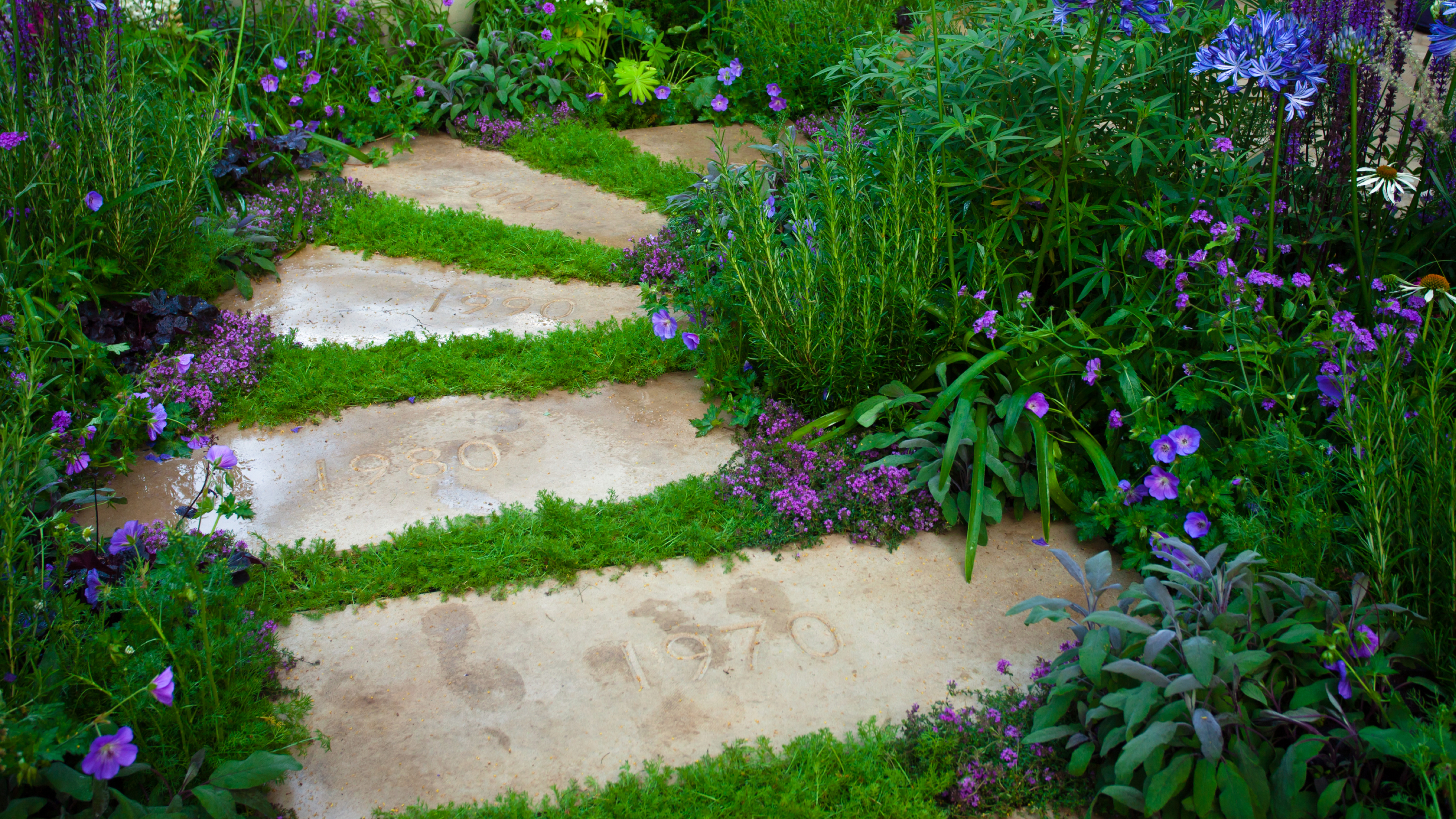Best Steppable Plants: Learn About Plants That Can Be Walked On
Don't worry about walking on these ground cover plants! Here are 5 tough steppable plants that don't mind if you tread on them.


What are walkable plants? They’re exactly what you think – plants that can safely be walked on. Walkable plants are often used as lawn replacements because they are tough, drought-tolerant, and require very little maintenance. Keep in mind, however, that these plants to step on may not be as durable as traditional lawn, and many won’t hold up to heavy foot traffic.
Using Steppable Plants in Gardens
Some types of walkable plants are deciduous and die down in the winter, but many evergreen varieties are attractive year-round. Walkable plants work well along a pathway or bordering a flower bed and many work well in stubborn spots where grass won’t take hold, such as a dry spot under a tree or shrub. Most of the best steppable plants require absolutely no care once the plants are established, while others may need a trim once or twice a year. Keep in mind that many low-growing walkable plants can also be invasive.
Plants That Can Be Walked On
While there are a number of plants that can be walked on, below are some of the best steppable plants:
- Woolly thyme: Woolly thyme (Thymus pseudolanuginosus) is a type of ornamental thyme with fuzzy leaves and stems. This plant, which grows in USDA plant hardiness zones 5 through 8, withstands considerable foot traffic. One warning: wooly thyme sports tiny pink blooms that attracts bees. This may be a consideration if you have children, or if you enjoy barefoot strolls through the garden.
- Creeping wire vine: Creeping wire vine (Muehlenbeckia) is one of the best steppable plants for zones 6 through 9. Creeping wire vine displays glossy green leaves. Although the tiny white flowers are insignificant, they are replaced in late summer with small white fruit.
- Blue star creeper: Blue star creeper (Isotoma fluviatus) is a hardy, steppable plant that tolerates climates as far north as zone 5. This evergreen plant displays tiny blue flowers that last all summer. Blue star creeper isn’t the perfect solution for every situation because this rambunctious plant can be invasive.
- Veronica: Veronica (Speedwell) “Waterperry blue,” suitable for zones 4 through 9, is a steppable plant with deep green leaves that take on copper and burgundy highlights when the temperature drops. The springtime blooms are bluish lavender with white centers.
- Corsican Mint: Corsican mint (Mentha requienii), suitable for zones 6 through 9, is an aromatic, evergreen, steppable plant with tiny lilac blooms that show up in summer. Corsican mint can be slightly invasive, but as a general rule, it tends to be better behaved than most of its mint-family cousins.
Sign up for the Gardening Know How newsletter today and receive a free copy of our e-book "How to Grow Delicious Tomatoes".

A Credentialed Garden Writer, Mary H. Dyer was with Gardening Know How in the very beginning, publishing articles as early as 2007.